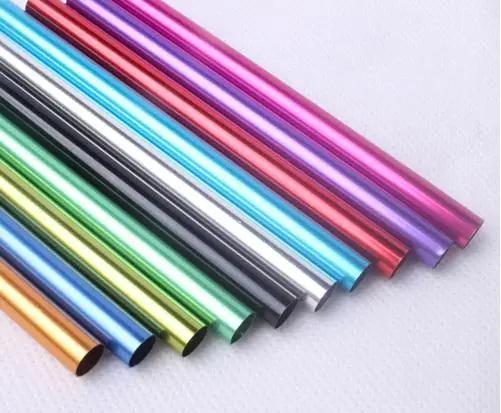Anodizing transforms aluminum through a fascinating, multi-step electrochemical process. Here's a breakdown of the key steps involved:
- Preparation and Cleaning: The aluminum undergoes a meticulous cleaning process to remove any contaminants like grease, oil, or dirt that might hinder the anodizing process. This cleaning often involves degreasing agents, etching solutions, and thorough rinsing to ensure a pristine surface for optimal oxide layer adhesion.
- Pretreatment (Optional):In some cases, the aluminum might undergo an additional pretreatment step. This can involve etching the surface with a mild acid solution to create microscopic pores. These pores can be beneficial for certain applications, such as allowing for better dye absorption during the coloring stage.
- Anodizing Bath:The heart of the process is the anodizing bath. The cleaned aluminum component acts as the anode (positive electrode) in a large tank filled with a special electrolyte solution, typically sulfuric acid. A cathode (negative electrode) is also placed within the tank to complete the electrical circuit.
- The Electrochemical Reaction: When an electric current is passed through the solution, a fascinating transformation occurs. Oxygen ions (negatively charged) from the electrolyte are attracted to the positively charged aluminum anode. These oxygen ions react with the aluminum atoms at the surface, forming a dense layer of aluminum oxide. The voltage and duration of the current application determine the final thickness of the oxide layer.
- Dyeing (Optional):If desired, the anodized aluminum can be dyed to achieve a specific color. The porous structure created during pretreatment (or naturally occurring) allows dyes to penetrate the oxide layer, resulting in a vibrant and long-lasting colored finish.
- Sealing:The final step involves sealing the anodized layer. The aluminum component is typically submerged in boiling deionized water or a special sealing solution. This process closes the pores in the oxide layer, further enhancing corrosion resistance and improving the overall durability of the anodized finish.
Anodizing is a carefully controlled process that requires precise management of factors like voltage, current, temperature, and bath chemistry. This ensures the formation of a uniform, high-quality oxide layer that maximizes the benefits of anodizing for the final product. About anodizing, I guess you might ask more such as What Are the Differences Between Anodizing and Painting?

